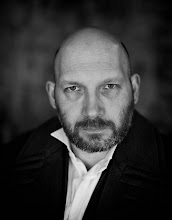
“Where the great plain of Tarphet runs up, as the sea in estuaries, among the Cyresian mountains, there stood long since the city of Merimna well-nigh among the shadows of the crags.”
Lord Dunsany – or Edward John Moreton Drax Plunkett as he was also known – was one of the great Irish fantasists and, arguably, one of the greatest fantasy writers that the world has ever seen.
His stories, lush and stylish, were an influence on, amongst others, H.P Lovecraft Robert E. Howard and J.R.R Tolkien. There is even an argument to be made that his short story ‘The Fortress Unvanquishable, Save For Sacnoth’ represents one of the earliest recognisable examples of heroic fantasy or sword and sorcery. The title story of his 1908 collection, The Sword of Welleran also contains many elements which might be familiar to fans of heroic fantasy – a once powerful kingdom reduced to indolence, an invading horde bent on revenge, the return of long-dead heroes and, of course, the titular sword.
The great city of Merimna, once the hub of a far-reaching empire, sits in its sedentary old age – a shrine to past glories where Art has replaced War as the central preoccupation of its people.
But in the plains and mountains, hostile tribes are stirring against Merimna, still smarting from centuries old defeats. Merimna’s only defense is the legacy of her legendary heroes – men who died many years before but who’s memory is still strong in the minds of Merimna’s enemies. So strong, in fact, that many refuse to believe that the heroes are dead (a belief reinforced by the statues of them that stand on the city walls of Merimna). The truth, of course, is that heroes though they may have been – capable of great feats of arms and cunning – they were simply men and, as each one received his final, mortal wound, he rode to ‘a certain deep ravine and cast his body in’.
During this time, a young man named Rold grows up in Merimna, worshipping both the memory and the magnificent statue of Welleran, the greatest hero of the Merimnian Empire.
When the tribes finally dare to send two condemned prisoners to Merimna to find out the truth, they discover that the heroes are nothing more than marble and that Merimna lies open to the revenge of her enemies.
But when the soldiers of four armies converge on Merimna, the ghost of her long-dead heroes stir once again, urging the men of Merimna to take up arms to defend her. Welleran himself goes to Rold and urges him to pick up his legendary sword and a great battle ensues whereby the men of Merimna rediscover their brutal heritage and the enemy tribes discover that legends sometimes have physical power.
Merimna is saved at a terrible cost in blood and the souls of her dead heroes return to paradise, their names and legends both reinforced and sullied by one more battle.
It is in the final passages of The Sword of Welleran where Dunsany’s power really shows through. For other writers, writers merely content to tell a fantastic and stirring adventure tale, the final battle would have been enough; but for Dunsany it is the chance to twist the narrative knife and to show the true cost of war.
…the sun arising to give new life to the world, shone instead upon the hideous things that the sword of Welleran had done. And Rold said: 'O sword, sword! How horrible thou art! Thou art a terrible thing to have come among men. How many eyes shall look upon gardens no more because of thee? How many fields must go empty that might have been fair with cottages, white cottages with children all about them? How many valleys must go desolate that might have nursed warm hamlets, because thou hast slain long since the men that might have built them? I hear the wind crying against thee, thou sword! It comes from the empty valleys. It comes over the bare fields. There are children's voices in it. They were never born. Death brings an end to crying for those that had life once, but these must cry for ever. O sword! sword! why did the gods send thee among men?'
And the tears of Rold fell down upon the proud sword but could not wash it clean.
Although his writing can be something of a challenge to modern readers – Dunsany’s prose style is dense and sometimes difficult to follow (particularly when compared to, say, H.G Wells who was a model of word economy by comparison – his work nonetheless rewards reading. The Sword of Welleran is a short tale – less than six thousand words – but packs a lot into its pages (enough, perhaps, for some more modern writers to spin an entire Big Fat Trilogy out of its concepts and characters).
Modern writers are always being given the advice ‘show, don’t tell’, whereas Lord Dunsany was an expert at telling, choosing his words so carefully that even the gaps between them are important, allowing the reader’s imagination to flow into those gaps, creating the additional details rather than having the author bombard them.
A master of the fantastic, Lord Dunsany created some of the most glittering short fiction to ever grace the genre. If you’re unfamiliar with his work, The Sword of Welleran (easily available on Project Gutenberg) is a great place to start.








